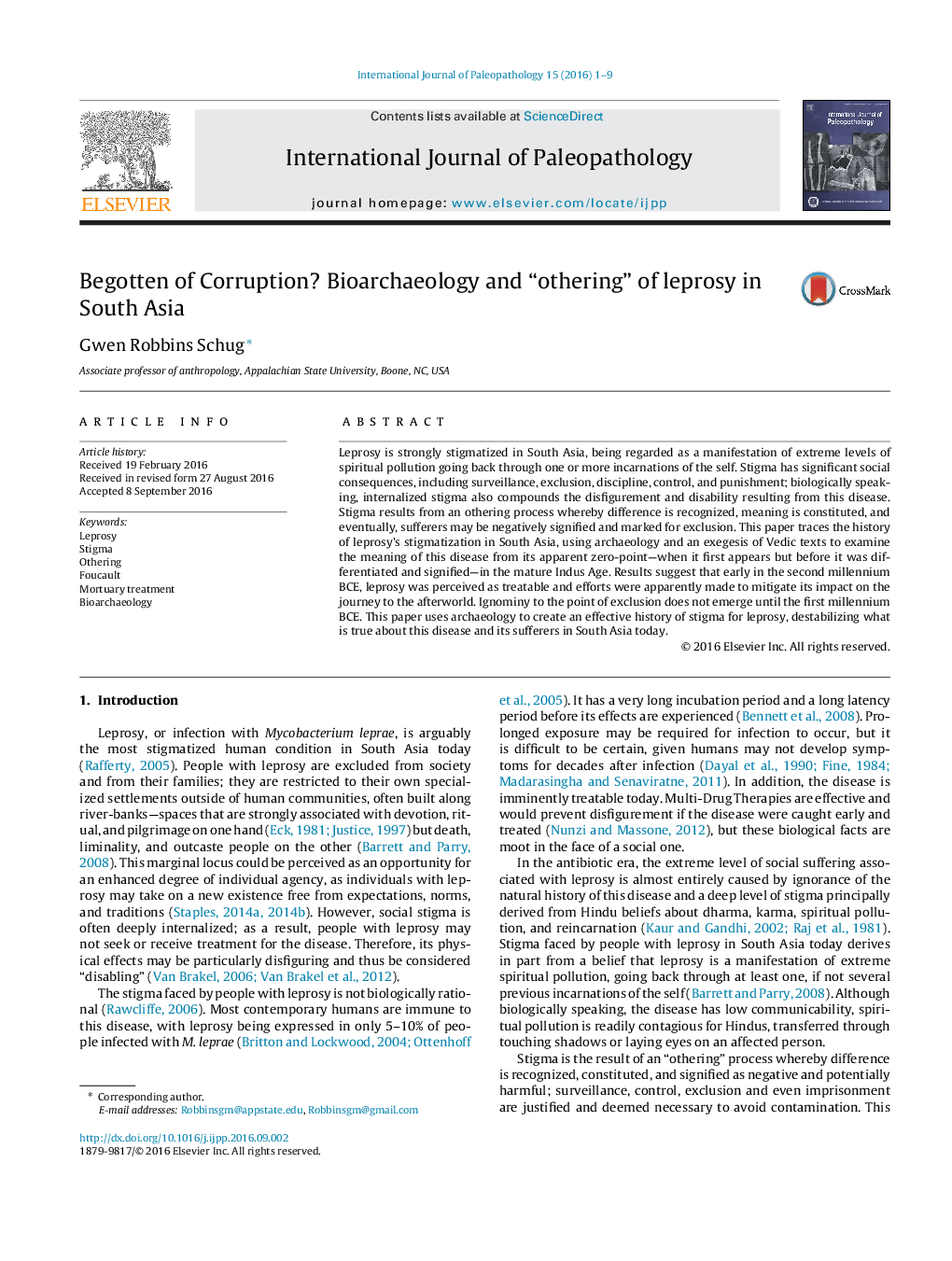| کد مقاله | کد نشریه | سال انتشار | مقاله انگلیسی | نسخه تمام متن |
|---|---|---|---|---|
| 4760569 | 1422376 | 2016 | 9 صفحه PDF | دانلود رایگان |
عنوان انگلیسی مقاله ISI
Begotten of Corruption? Bioarchaeology and “othering” of leprosy in South Asia
دانلود مقاله + سفارش ترجمه
دانلود مقاله ISI انگلیسی
رایگان برای ایرانیان
موضوعات مرتبط
علوم زیستی و بیوفناوری
بیوشیمی، ژنتیک و زیست شناسی مولکولی
فیزیولوژی
پیش نمایش صفحه اول مقاله

چکیده انگلیسی
Leprosy is strongly stigmatized in South Asia, being regarded as a manifestation of extreme levels of spiritual pollution going back through one or more incarnations of the self. Stigma has significant social consequences, including surveillance, exclusion, discipline, control, and punishment; biologically speaking, internalized stigma also compounds the disfigurement and disability resulting from this disease. Stigma results from an othering process whereby difference is recognized, meaning is constituted, and eventually, sufferers may be negatively signified and marked for exclusion. This paper traces the history of leprosy's stigmatization in South Asia, using archaeology and an exegesis of Vedic texts to examine the meaning of this disease from its apparent zero-point-when it first appears but before it was differentiated and signified-in the mature Indus Age. Results suggest that early in the second millennium BCE, leprosy was perceived as treatable and efforts were apparently made to mitigate its impact on the journey to the afterworld. Ignominy to the point of exclusion does not emerge until the first millennium BCE. This paper uses archaeology to create an effective history of stigma for leprosy, destabilizing what is true about this disease and its sufferers in South Asia today.
ناشر
Database: Elsevier - ScienceDirect (ساینس دایرکت)
Journal: International Journal of Paleopathology - Volume 15, December 2016, Pages 1-9
Journal: International Journal of Paleopathology - Volume 15, December 2016, Pages 1-9
نویسندگان
Gwen Robbins Schug,